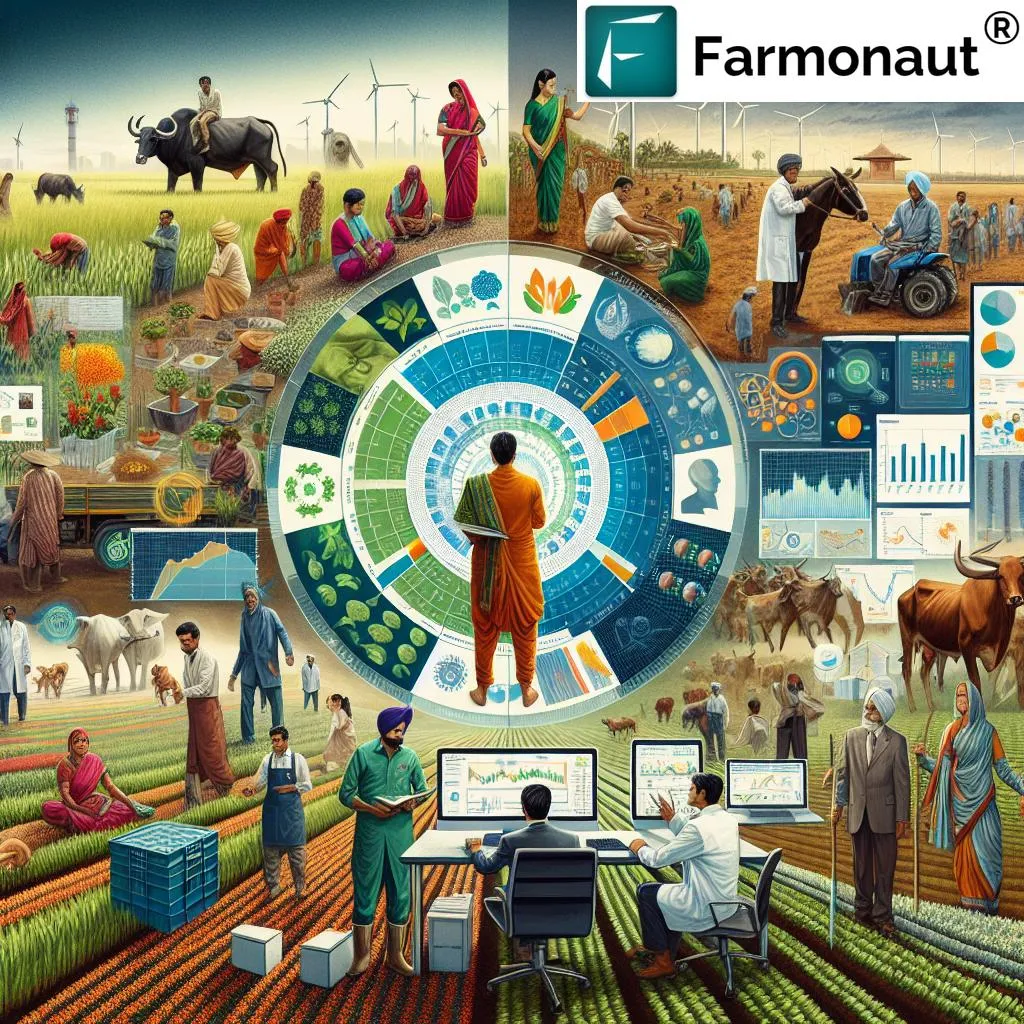In the heart of India, a groundbreaking study led by Gaurendra Gupta from the ICAR- Indian Grassland and Fodder Research Institute in Jhansi, Uttar Pradesh, is reshaping our understanding of sustainable agriculture and its implications for the energy sector. Published in the journal ‘Farming System’ (translated to English as ‘Crop Rotation System’), the research delves into the livelihood and energy-carbon dynamics of livestock-based integrated farming systems (LIFS), offering insights that could revolutionize the way we approach agricultural productivity and environmental sustainability.
Gupta and his team conducted a comprehensive 3-year life cycle assessment of a 3-hectare LIFS, comparing it with the traditional groundnut-wheat cropping system (GWCS). The LIFS integrated 30 adult cattle units with a diverse range of crops, including food crops, fodder, vegetables, flowers, and fruits. The results were staggering. “LIFS achieved 8.4 times higher production, 6.4 times greater returns, and 6.6 times more employment compared to GWCS,” Gupta explained. This integrated approach not only boosted productivity but also significantly enhanced resource recycling, profitability, and employment opportunities.
The study revealed that livestock played a pivotal role in the LIFS, dominating inputs and outputs. “Livestock accounted for 86% of the cost, 66% of the energy, and 92% of the carbon inputs, as well as 77% of the production, 66% of the returns, and 59% of the employment outputs,” Gupta noted. This synergy between crops and livestock, coupled with improved management practices, led to a 4.6 times greater net carbon gain compared to GWCS.
The carbon footprint of LIFS was higher than GWCS but still better than similar livestock + crop systems. This finding underscores the potential of LIFS to enhance climate resilience and ecosystem services. However, Gupta emphasizes the need for optimizing livestock’s energy-carbon use to achieve greater environmental sustainability.
The implications for the energy sector are profound. As the world grapples with the challenges of climate change and the need for sustainable energy sources, the insights from this study offer a promising path forward. By integrating livestock with diverse cropping systems, farmers can not only increase their productivity and profitability but also contribute to a more sustainable and resilient agricultural landscape.
This research is a call to action for researchers, policymakers, and farmers alike. It highlights the urgent need to adopt LIFS for stable livelihoods and sets a long-term goal for sustaining energy-carbon use. As Gupta puts it, “The immediate adoption of LIFS can provide stable livelihoods, while setting long-term goals for sustaining energy-carbon use can evolve a ‘total sustainability’ of production systems in the study region and similar agroecologies worldwide.”
In the quest for sustainable agriculture and energy solutions, this study serves as a beacon of hope and a roadmap for the future. It challenges us to think beyond traditional farming practices and embrace innovative, integrated approaches that can transform the agricultural landscape and contribute to a more sustainable planet.

